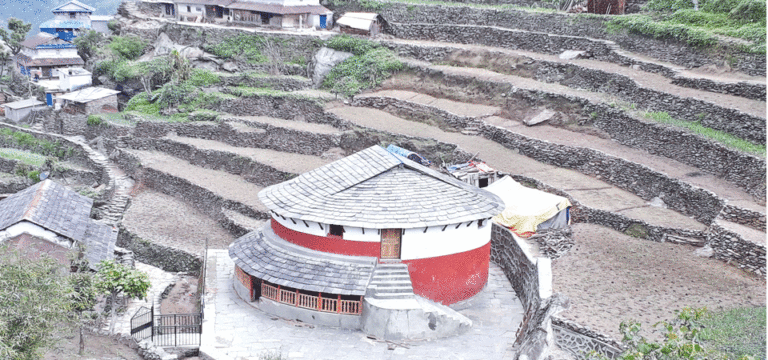
A museum representing the ethnic Gurung community has been constructed in Bhujung, a tourism destination at Ward 4 of Kwhlosothar Rural Municipality.
The museum has been constructed by the Bhujung Community Home-stay and Tourism Management Sub-committee.
According to the locals, the museum is expected to be a popular attraction for domestic and foreign tourists.
“The museum has been constructed under the financial support of Gandaki Province government, Ward Office and a German national,” said Tul Bahadur Gurung, chairman of the sub-committee.
Gurung informed that a total of Rs. 5.1 million was spent for the construction of the museum. The construction work began around three years ago.
The Ward 4 office had provided a support of Rs. 322,000 at the beginning. Then the Gandaki Province allocated Rs. 1 million in the fiscal year of 2019/20.
Likewise, in 2020/21, a budget of Rs. 2 million and Rs. 600,000 was allocated through Lamjung Division Forest Office and Ward 6 office respectively for the museum’s construction.
Similarly, the sub-committee bought 7 aana land (1 Aana= 31.80m2) at Rs. 180,000 provided by a German national. It was used from Rs. 1.2 million provided by the individual to the Annapurna Conservation Area Programme (ACAP).
“The two-storey museum consists of equipment and tools used by people of Gurung communities throughout their life. It includes utensils, art works, clothes and other tools used daily, which are considered essential in the Gurung culture,” said Gurung.
Similarly, the authorities are planning to add items representing the Gurung culture from different parts of the countries.
“Bhujung is a village with majority of people from Gurung community due to which we decided to construct the museum. We expect to provide information about our culture and promote it,” said Ward Chairman Khim Bahadur Gurung.
The Bhujung village is at an altitude of 1,650 meters above the sea level and has a close-knit settlement of around 400 families in a small area. Bhujung was earlier a different village development committee but now is a ward of Kwhlosothar.
The locals had tried to make it a tourism destination since more than two decades ago but it was affected by the decade-long Maoist insurgency.
Nevertheless, the locals continued their efforts and have been able to identify their village as one of the major tourism destinations in Lamjung. A total of 29 houses in the village have been operating home stay here.
Source : THE RISING NEPAL,






